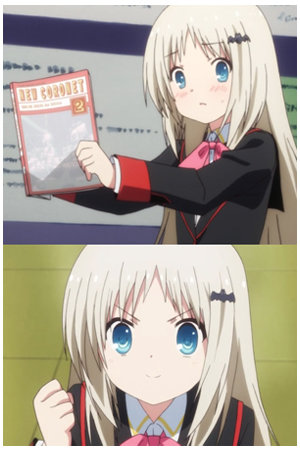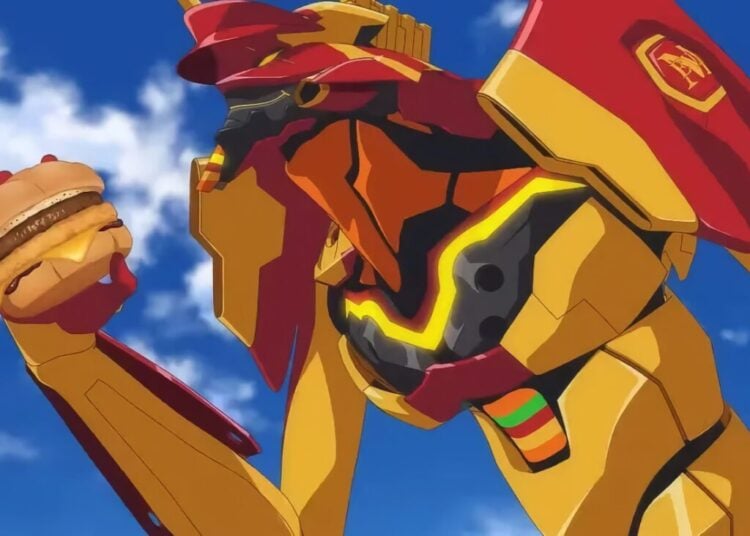It’s fun to analyze the way anime, game and manga companies go about creating characters that will win the hearts of fans. One common approach is to mix up an all-Japanese cast by adding in a character of mixed ancestry, called ハーフ haafu (“half”) or クォーター kuo-ta- (“quarter”), who naturally speaks Japanese thanks to some convenient plot device, usually having been raised by a Japanese grandmother. There’s a long list of these half-Japanese characters in anime, including Asuka and Mari in Evangelion, Yomiko Readman from R.O.D., L from Death Note and many more. One joke that comes up quite a lot is characters who are unable to speak English properly despite being haafu, as if language were something that was passed along to children via DNA. Some examples of this joke include Tina Foster from Aoi Yori Aoshi (a full American but raised in Hakata, Kyushu), Aisha from the Da Capo series, the half-British Kobato-chan from I Have Few Friends and Rebecca Miyamoto from Pani Poni Dash!, a child savant who graduated from M.I.T. at the age of eleven yet can’t pronounce the word “Massachusetts” without messing up in a ridiculously cute way. Another example of this joke is the ridiculously kawaii Kudryavka Noumi from the Little Busters! anime and games, who is three-quarters Russian and one quarter Japanese yet cannot speak English. (Nevermind that English is not the native language of Russia, this is anime logic!) In one scene poor Kud is called on to read out loud from the textbook, but she can’t even pronounce simple words correctly, making the class laugh. Her friends resolve to help her out by giving her a sentence to translate, which is displayed on the screen in English text which melts into kana syllables as Kud pronounces the words. This is a good example of what’s wrong with the way Japanese learn English, allowing their brains to “think” in kana sounds that can only express syllables like ka, ki, ku, ke and ko but never the consonant “k” by itself. This is one big reason why Japanese often have thick accents when speaking English, since coming from katakana words like “warehouse” or “weekend” contain six syllables each instead of two as in English. The reverse version of this is when foreigners learn Japanese from a textbook that uses “Romanized” Japanese (e.g. written in the English alphabet) instead of proper hiragana, katakana and kanji. Study tools like Danny Choo’s Moekanji , the Genki textbook series and those outstanding White Rabbit flashcards teach you using only proper Japanese characters, never Romanized Japanese, which is why we recommend them to our customers.

Haafu characters who can’t speak English is a fairly common joke.













